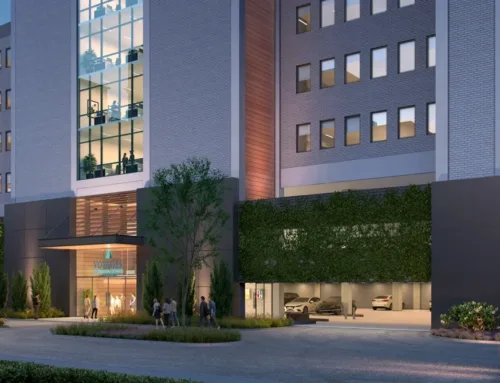
Houses in the proposed expansion area of the Lakewood Conservation District. Photography by Renee Umsted.
Lakewood neighbors voted to protect trees and prevent demolition of historical homes at the Jan. 18 conservation district expansion meeting.
Specifically, residents at the 12th post-application meeting were concerned about preserving larger trees in front yards of the 275 addresses in the expansion area, as well as many homes built during the neighborhood’s development.
The existing Lakewood Conservation District, which is directly adjacent to the expansion area, does not have regulations on trees. But trees are regulated in Article X of the Dallas Development Code, planner Trevor Brown said.
According to the code, a permit is required to remove a protected tree unless the tree is on a lot that is less than two acres and has a single-family or duplex use. That means residents in the Lakewood Conservation District expansion area can keep or remove trees on their property as they choose, without getting the city’s blessing.
However, homeowners lack the same authority for trees located in the parkway, the area between a property line and the public right-of-way. That’s city property, so homeowners have to receive permission from the city before adding or removing trees there.
At first, neighbors were talking about preserving trees in the parkway and keeping away from regulating trees in residents’ front yards.
“It’s a bag of spaghetti that you’ll never unravel,” resident Ed Brooks said.
They also discussed a regulation that would protect trees on properties where homes are being demolished. No one wanted to see trees being clear cut on lots where homes are torn down for new construction.
But the city doesn’t get involved with trees on private property until a permit application is submitted. As long as trees are removed while a house is standing on the property, no city regulations have been violated.
“I don’t get a tree survey for something that’s not there,” chief arborist Phil Erwin said. “They know they cut down the tree, make it basically a tree that’s not viable, and I have to consider it dead.”
As the discussion continued, neighbors reached a different consensus than they had earlier in the meeting, saying they were concerned about larger trees in front yards. These trees, along with the many located in the parkway areas, are among the defining traits of the neighborhood. Through a conservation district and its regulations on architectural and developmental standards, residents are hoping to preserve the character of the neighborhood.
Meeting attendees ended up voting in favor of applying existing city regulations for trees to front yards, meaning that a permit would be required to remove a tree larger than 8 inches in diameter in the front yard. The vote was taken with the understanding that the 8-inch rule could be modified at a later date.
After that, the discussion moved to demolition.
This is a topic that has been included in previous meetings. In one, there was talk of protecting “significant” homes, which are those designed by notable architects (Clifford Hutsell, Charles Dilbeck, etc.) or built by notable developers (Dines and Kraft), along with homes that exemplify one of five “contributing” styles: Tudor, French Eclectic, Spanish Eclectic, Neoclassical and Colonial Revival.
But at the Jan. 18 meeting, there was debate over whether a home built within the past 20 years that was identified as one of the five contributing styles (for example, a Tudor built in 2005) should also be protected by a demolition clause.
A demolition provision in the ordinance would only allow demolition if a home inspector and certified engineer determine that the cost of bringing the home to a minimum livable standard is more than 80% of the value of the home.
At the end of the meeting, neighbors voted to protect by a demolition clause original homes (those built before 1960) that also exemplify contributing styles (Tudor, French Eclectic, Spanish Eclectic, Neoclassical and Colonial Revival).
The next meeting will be held at 6 p.m. Jan. 31 at Samuell-Grand Recreation Center.
Review previous meeting presentations and recordings here. To share comments regarding trees or demolition, email Trevor Brown at trevor.brown@dallas.gov. Include “LWCD Expansion” and your address in the subject line.





